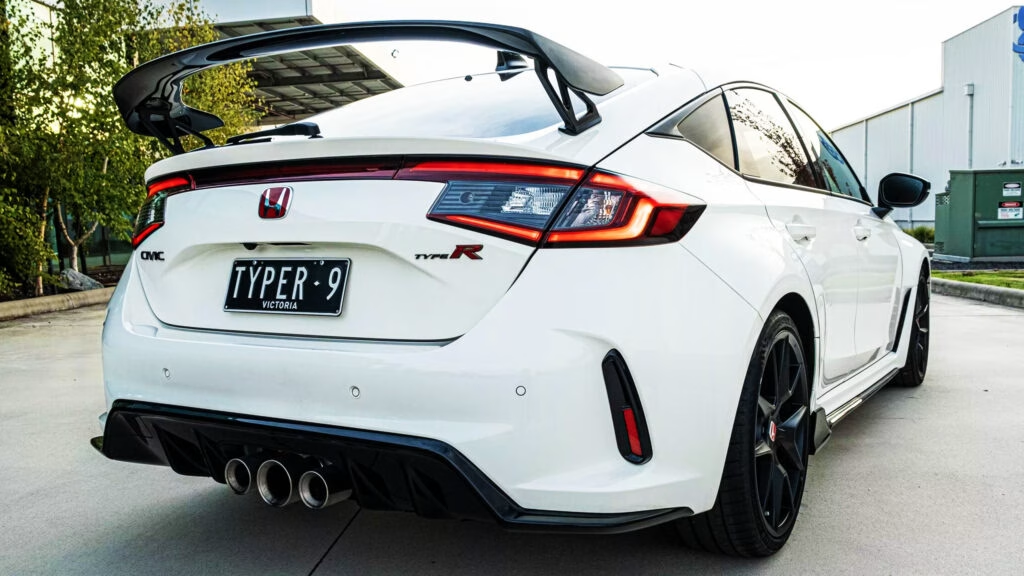Why Does Max Verstappen Dislike Front-Wheel Drive Cars So Much?
Max Verstappen isn’t one to mince words, especially when it comes to cars. The four-time Formula 1 champion, known for his laser-sharp focus and fearless driving, recently called front-wheel drive “the worst thing ever” and “anti-driving” during a Mustang GTD promo with automotive journalist Chris Harris. That’s a pretty strong statement—especially from someone who’s spent years wringing the neck of some truly legendary front-wheel drive machines, including the Honda Civic Type R. So, what’s behind Verstappen’s harsh verdict?
What Makes Front-Wheel Drive Feel “Boring” to a Pro Like Verstappen?
To understand Verstappen’s perspective, it helps to know where he’s coming from. Raised on a diet of go-karts and open-wheel racers, Verstappen’s entire career has revolved around rear-wheel drive (RWD) platforms. For top-level drivers, RWD offers a unique sense of balance and control—especially when pushing a car to its absolute limits. The ability to steer with the throttle, rotate the car mid-corner, and feel the rear end dance is, for many, the essence of high-performance driving.
Front-wheel drive (FWD), on the other hand, puts all the power and steering duties on the front tires. This can lead to understeer, torque steer, and a general sense of the car “pulling” rather than “pushing” through corners. For everyday drivers, FWD is practical and safe, especially in slippery conditions. But for someone like Verstappen, who lives for razor-sharp feedback and dynamic handling, it can feel like the car is doing all the work for you—removing the challenge and, in his words, making it “anti-driving.”
Didn’t Verstappen Own a Honda Civic Type R? What Gives?
Here’s the twist: Verstappen isn’t a total stranger to front-wheel drive. In fact, he used to drive an FK8 Honda Civic Type R, one of the most celebrated FWD performance cars ever made. Honda supplied engines to the Red Bull Formula 1 team, and Verstappen was often seen behind the wheel of the Civic Type R both on and off the track.
So, is it all just posturing? Not really. Even among enthusiasts, the Civic Type R is often described as the “exception to the rule”—a front-driver that feels more like a precision tool than a compromise. Yet, for Verstappen, even the best FWD can’t replicate the visceral connection he feels in a rear-driven car. It’s a bit like asking a concert pianist to play on a digital keyboard. Sure, it works, but the magic just isn’t there.
How Do Other Experts and Data Stack Up on This Debate?
Verstappen’s opinion isn’t unique among professional drivers. Chris Harris, the journalist who joined him for the Mustang GTD drive, has also voiced a preference for rear- or all-wheel drive when it comes to pure driving enjoyment. In a 2023 survey by Car and Driver, 68% of performance car owners said they preferred RWD for spirited driving, citing better balance and more engaging handling.
Yet, it’s worth noting that FWD cars have come a long way. The latest Civic Type R, for example, set a Nürburgring lap record for front-wheel drive cars in 2023, clocking in at 7:44.881. That’s faster than many classic sports cars and a testament to how much engineering has closed the gap. For most drivers, especially those who need to tackle rain, snow, or city traffic, FWD remains the sensible choice.
Why Does the Mustang GTD Matter in This Conversation?
The Mustang GTD, which Verstappen and Harris were promoting, is a perfect example of the kind of car that gets enthusiasts’ hearts racing. With its V8 power, rear-wheel drive layout, and track-focused suspension, it’s designed to deliver the kind of feedback and excitement that Verstappen craves. Ford’s partnership with Red Bull Powertrains for next year’s F1 hybrid powertrains only adds another layer of intrigue—blending American muscle with cutting-edge racing tech.
During the promo, Verstappen’s excitement was palpable when he got behind the wheel of the GTD. The difference in his demeanor compared to discussing FWD cars was night and day. For him, and many like him, it’s not just about speed—it’s about the feeling of being truly connected to the machine.
Is There Still a Place for Front-Wheel Drive in Performance Cars?
Absolutely. While Verstappen’s comments might sting for FWD fans, the reality is that front-wheel drive isn’t going anywhere. It’s efficient, cost-effective, and, in the right hands, can be a blast. Cars like the Civic Type R, Renault Megane RS, and Hyundai i30 N prove that FWD can deliver serious thrills—especially for drivers who don’t have access to a racetrack every weekend.
But for those who want the ultimate in driver engagement, RWD and AWD platforms still reign supreme. It’s not just about lap times; it’s about the sensation, the challenge, and the reward of mastering a car that asks more of its driver.
What’s the Real Takeaway for Everyday Drivers?
Here’s the thing: you don’t have to be a Formula 1 champion to appreciate what makes a car fun to drive. Whether you’re carving up a mountain road in a rear-wheel drive coupe or zipping through city traffic in a hot hatch, the best car is the one that puts a smile on your face.
The big takeaway? Driving enjoyment isn’t about perfection—it’s about smarter adjustments. Start with one change this week, whether it’s trying a new route, tweaking your driving style, or even test-driving a different type of car. You’ll likely spot the difference by month’s end.

